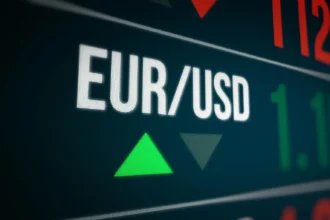Bitcoin Blasts Past $106K: Whale Demand, Supply Crisis, and Geopolitical Fears Fuel Bull Run
As of June 15, 2025, Bitcoin is trading at $106,026.31, defying traditional market uncertainties with its resilience and upside momentum. From exchange reserves hitting record lows to massive whale accumulation and surging network fundamentals, BTC is now more than just a digital currency—it’s a macro hedge amid rising geopolitical instability.
The ongoing Iran-Israel war has rattled global markets, but Bitcoin’s price has continued to surge, reflecting a paradigm shift in investor behavior. From decentralized protection to institutional interest, this rally is unlike anything the crypto ecosystem has seen before.
Exchange Reserves Hit Multi-Year Lows, Fueling the Bitcoin Supply Crunch
Bitcoin reserves on centralized exchanges have plunged to 2.4 million BTC, the lowest since mid-2024, marking a net drop of 800,000 BTC from the peak of 3.2 million BTC in July 2024.
According to on-chain data shared by RoverCRC, this trend accelerated sharply in Q2 2025. The drop in BTC availability on exchanges coincides with Bitcoin’s price surge from $60K to over $106K, signaling reduced short-term selling pressure and strong investor conviction in holding.
💡 What This Means:
- Fewer BTC on exchanges = less liquidity for selling
- HODLing behavior = increased confidence in Bitcoin as a long-term asset
- Combined with increasing demand, a supply shock appears imminent
The inverse correlation between supply on exchanges and price increases points toward potential explosive upside in the coming months, especially as the market braces for further macro volatility.
Whale Wallets Add 250,000 BTC Since Mid-2024: Institutional Players Double Down
Whale wallets—addresses holding large amounts of BTC—have quietly accumulated over 250,000 BTC from June 2024 to May 2025, increasing their holdings from 3.2 million to 3.45 million BTC, according to research from Coinvo.
This accumulation aligns perfectly with Bitcoin’s climb from $60K to $110K. High-net-worth individuals and institutions are now strategically buying in, indicating long-term belief in Bitcoin’s monetary value, particularly amid fiat currency debasement and geopolitical risk.
Key Insights:
- Whale activity intensified in Q4 2024 and Q2 2025
- Exchange outflows match whale accumulation patterns
- Sign of coordinated, institutional-level purchasing
Such synchronized whale behavior suggests a calculated investment strategy, likely influenced by macroeconomic hedging needs and supply/demand forecasting.
Bitcoin Network Fundamentals Are Stronger Than Ever
Even behind the scenes, Bitcoin’s technical health remains robust. In June 2025, the Bitcoin network’s average weekly hashrate climbed to 939.1 EH/s, up from 650 EH/s a year earlier. Mining difficulty now sits at 126.41T, reflecting high miner participation.
📈 Hashrate spikes above 1,000 EH/s have occurred multiple times since late 2024.
This massive increase in both hashrate and difficulty indicates a secure and profitable environment for miners, who only scale operations when they expect strong future returns.
Why It Matters:
- Higher hashrate = more secure network
- Rising difficulty = competition, miner trust in long-term value
- Miner behavior often precedes bullish cycles
Bitcoin as a Geopolitical Hedge in the Iran-Israel War
The Middle East crisis, especially the escalating Iran-Israel war, has created economic ripples across oil markets, defense sectors, and global equity indices. However, Bitcoin appears unshaken—and in fact, thriving.
Despite ongoing missile strikes, air raids, and rising border tensions, Bitcoin continues to rally. The decoupling of BTC from traditional assets like gold or the S&P 500 indicates that many now view it as a geopolitical hedge, not just a speculative play.
Implications:
- Global investors are choosing Bitcoin over traditional assets
- Institutional inflows are rising due to de-dollarization fears
- Macro uncertainty is becoming a bullish driver for decentralized assets
What’s Next for Bitcoin in 2025?
If current trends continue, the Bitcoin market could experience an aggressive supply shock that pushes prices even higher.
With:
- Exchange reserves at record lows
- Whale wallets in aggressive accumulation
- Hashrate and difficulty metrics at historic highs
- Military tensions driving up fear and hedging behavior
…Bitcoin seems primed for another leg up.
Analysts suggest the next breakout zone could see Bitcoin challenge the $115K–$120K range, especially if traditional markets continue to reflect volatility while crypto maintains upward momentum.
Frequently Asked Questions (FAQs)
1. Why are Bitcoin exchange reserves dropping?
BTC reserves on exchanges are falling due to increased long-term holding and self-custody by investors, reducing the number of coins available for sale.
2. What is the impact of whale accumulation?
Whales buying large amounts of BTC reduces supply on exchanges, often leading to price increases and signaling strong market confidence.
3. How does the Iran-Israel conflict affect Bitcoin?
Geopolitical instability increases demand for non-sovereign assets like Bitcoin, viewed as a hedge against traditional market risks.
4. What does an increasing hashrate mean for Bitcoin?
A rising hashrate indicates stronger network security and confidence from miners, usually associated with bullish price trends.
5. Is a supply shock possible in 2025?
Yes, the combination of low exchange reserves, high accumulation, and rising demand suggests a potential supply crunch that could drive prices higher.
6. Is Bitcoin becoming a safe-haven asset?
Yes, especially during geopolitical or macroeconomic crises, more investors are treating Bitcoin like digital gold.
⚠️ Disclaimer
The content provided in this article is for informational and educational purposes only and does not constitute financial advice. Cryptocurrency investments are inherently risky and highly volatile. Always conduct your own research or consult with a qualified financial advisor before making investment decisions. The views expressed here are based on publicly available data as of June 15, 2025.



